02:49
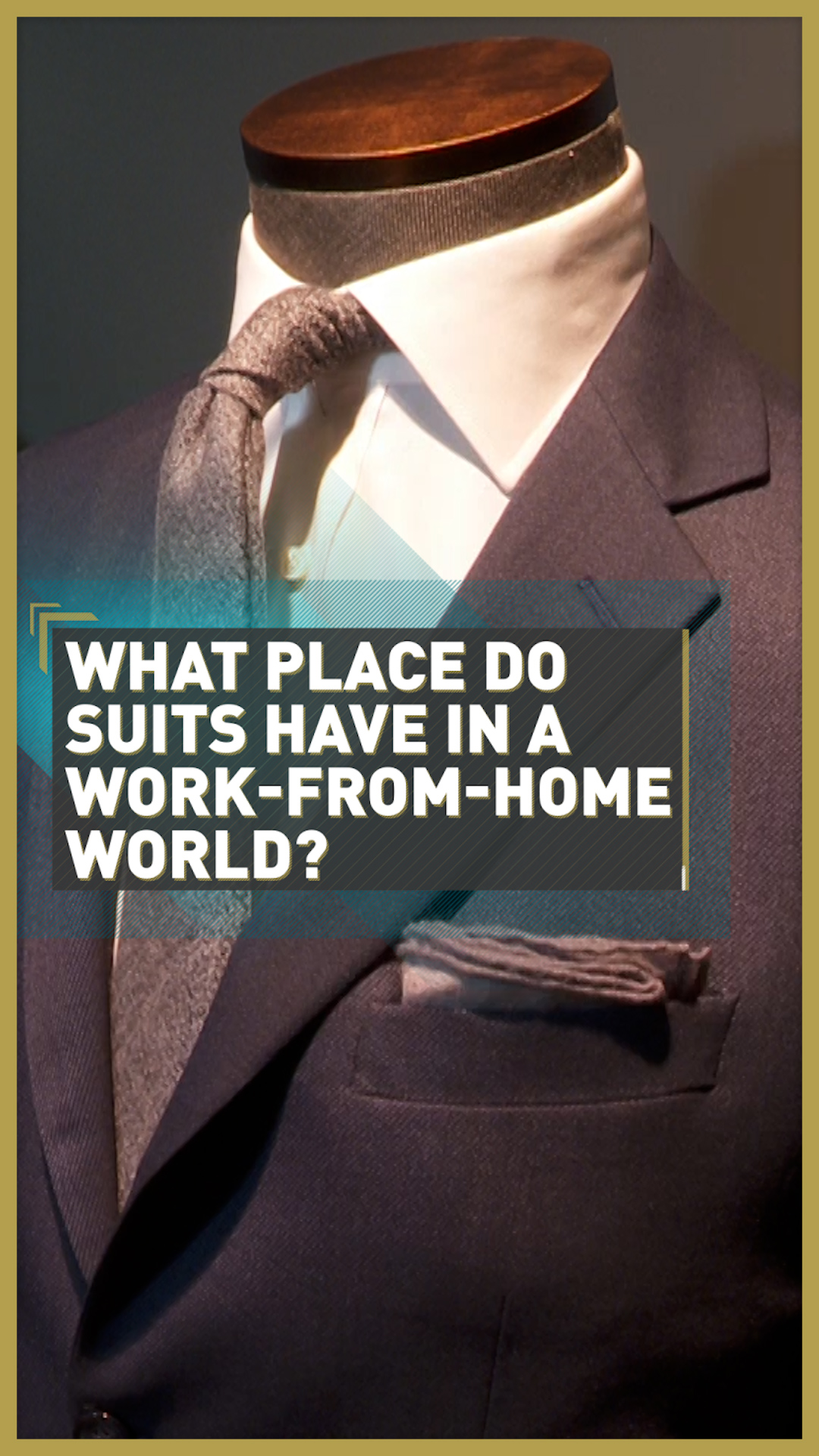
Working from home has created a whole new look, as a new Zoom-style has evolved. This could be described as business on the top half and comfort for the bottom half.
Lockdowns and restrictions have also cut people's social lives, with most formal events, and the dressing-up that comes with them, being canceled.
So what future is there for suits?
CGTN Europe spoke to Craig Featherstone, a master tailor and the CEO of Featherstone London Bespoke, who says that whilst comfort is a priority for many at the moment, there is a place for the suit in 2020 and beyond.

CLICK: WHY THE ALPS FACE AN UNCERTAIN FUTURE
"I've been told for years that this is the end of tailoring and it's the end of suits," Featherstone laughs. "It's not happening. There'll always be a time for suits. There will always be an occasion.
"You're never going to go to a wedding or a funeral in tracksuit bottoms. Many people will be wearing that now because they're starting to work from home and stuff like that but there's always going to be a time for suits and to dress up – to make you feel better as well, to make you feel special, for respect, for trying to get somewhere in the business."
As for that half-dressed style for video calls, Featherstone says that part of its development is because professionals still care about how they present themselves.
"People are on Zoom calls and video calls at home at the moment. So, obviously a lot of people are at home working in more casual wear and comfort wear.
"If you notice, when they're actually on the screens, they'll put their shirt back on and their suit. A few people have been caught out a few times when you can see them not wearing their suit bottoms underneath, but it just shows that they still do want to represent themselves for their companies in a smart way."
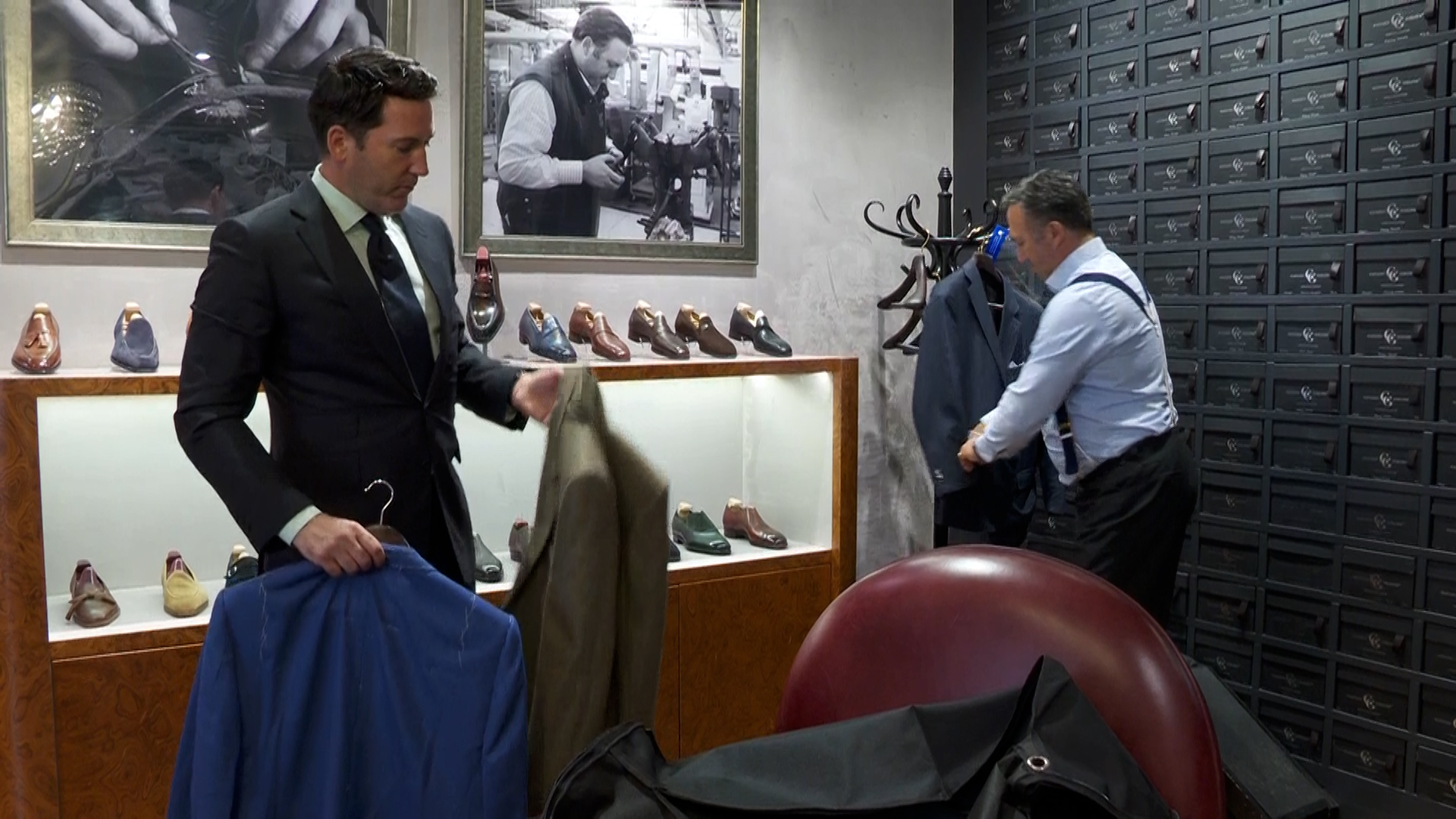
Master tailor Craig Featherstone has been tailoring for 25 years and preserves the pure bespoke standard in his label, Featherstone London. /CGTN
Master tailor Craig Featherstone has been tailoring for 25 years and preserves the pure bespoke standard in his label, Featherstone London. /CGTN
Featherstone says that part of wearing a suit is about mentality. He says a suit is like armor and is synonymous with aspiration. The master tailor explains that for many, putting a suit on is almost like a ceremony in itself which makes you feel like "you're ready for business."
The Savile Row tailor also explains that while comfort is a priority for many at the moment, people are actually looking forward to wearing a suit again when restrictions are lifted and the world as we know it returns to relative normality.
"People who would have worn suits before are still going to wear suits now. People who didn't wear suits before probably aren't going to wear suits."
Featherstone explains that formal fashion in a COVID-19 world is not about adaptation but is more about a barrier between an increasingly blurred work and home life. Even working from home, many professionals still opt for suits and formalwear as a way of maintaining a sense of professionalism.
"I don't think it's going to adapt so much but I think when you're not seen by people, you probably will wear more comfort clothes.
"You have to differentiate work from home life as well. The suits are sometimes a barrier. You go from your comfort wear and then get changed into something smart - it feels like you're doing a job then, rather than the whole day moulding into one."
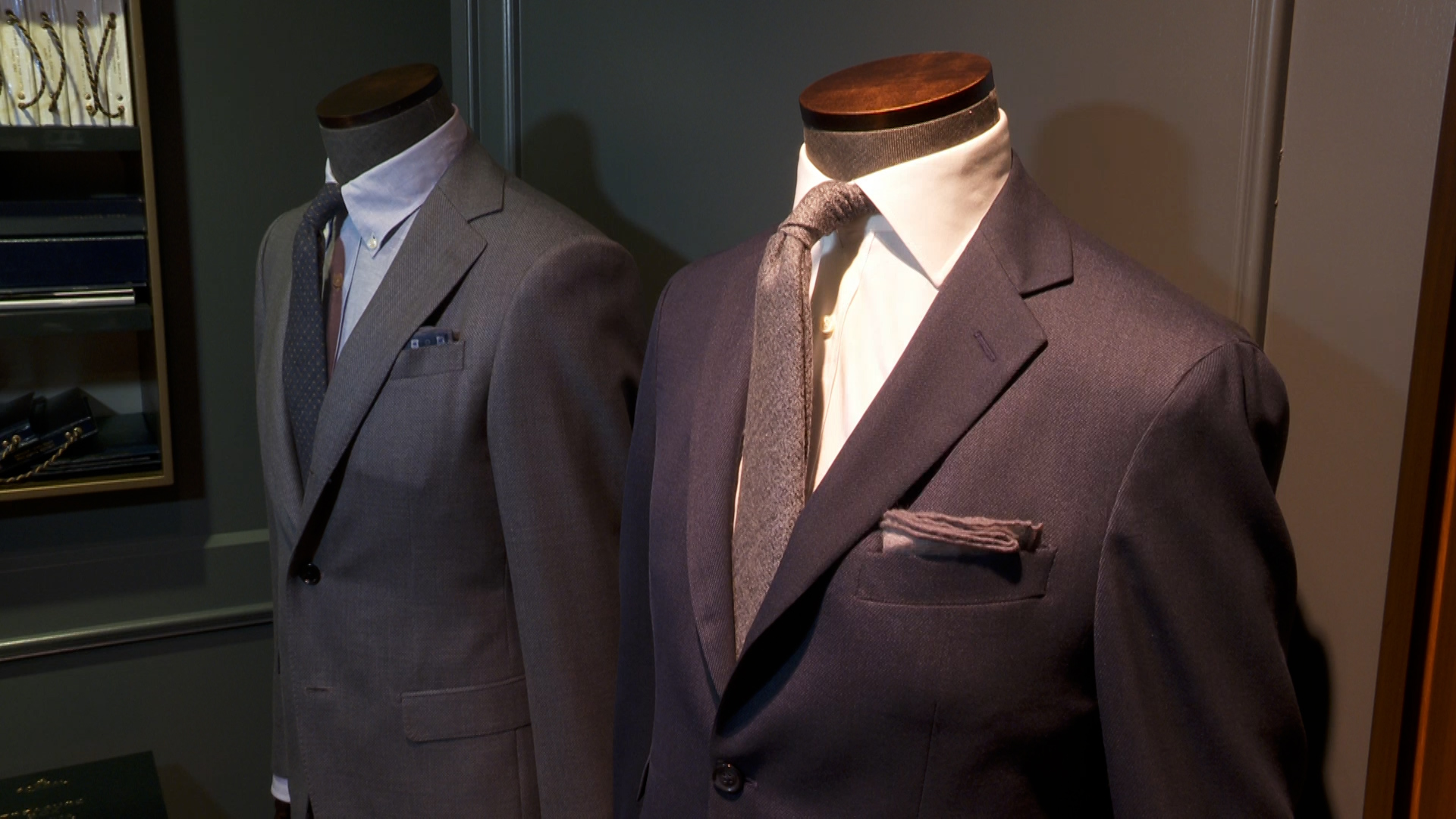
A pure bespoke suit can take 90 hours to create because of its intricate construction and hand-stitching throughout. /CGTN
A pure bespoke suit can take 90 hours to create because of its intricate construction and hand-stitching throughout. /CGTN
A brief history of the suit
The suit has evolved over time and its style changed significantly during the 20th century, to the point that different suits are symbols of various eras. If you see flares you know it is the 1970s; if the suit is large and oversized with loud colors, it is most probably from the 1990s.
Back in the 1800s, frock coats, breeches and stockings were a popular style combination. Beau Brummell, a prominent figure in the court surrounding the Prince Regent (later King George IV), rejected the frock coats and powdered wigs of the time. This was a major factor in the development of the suit as we know it today – a two-piece consisting of a jacket and full-length trousers, or three-piece with the addition of a waistcoat.
The 20th century brought major transformations. In the 1920s, the suit was considered a way of demonstrating your wealth, and they were normally heavily accessorised with tie pins and bars. Pants were also high-waisted and fairly baggy – think Charlie Chaplin for the loose fit and Gatsby for the bright, bold suit which hinted at wealth.

The suit has evolved considerably from the 1800s to the present day. /James Sandifer/CGTN
The suit has evolved considerably from the 1800s to the present day. /James Sandifer/CGTN
By the 1950s, both jackets and loose pants were à la mode, accompanied by dark suits, white shirts, dark ties and pocket squares. The clean white socks accompanied by loafers also became a signature look of Elvis Presley.
In the 1960s, The Beatles popularised the collarless suit – with the Nehru jacket, named after the prime minister of India – which was normally grey or black. At the same time, the preppy style was synonymous with John F. Kennedy and ties, trouser legs and lapels all became slimmer.
Flared trousers reigned in the 1970s, as seen in Saturday Night Fever, alongside the rise of the leisure suit. Lapels and tie knots became bigger than they had ever been before.
The 1990s were all about smart-casual, and dressing the suit down was a popular choice, with many sporting a suit jacket and casual jeans combination. Oversized suit jackets were also on trend, often with bold patterns, such as red pinstripes and paisley ties.
Time-traveling through the 2000s to the present day, the suit has been sported with sneakers, and there have nods back to previous decades, with slim fit, rocker styles and tailored suits all making an appearance. As lifestyles, standards and society transformed, suit materials also significantly changed.
A wealth of options
Featherstone, who has noticed these changes as a master tailor, says "people don't work manually in their suits anymore, so things have changed to lighter materials and fabrics."
So, what is the ideal suit today? "I think it's different for different age groups," says Featherstone. "A lot of the younger guys are wearing very tight trousers, slightly higher off the shoe, narrow at the bottom, slightly tighter-fitted jackets.
"But then the slightly older range would wear a fitted suit all in the right places, but maybe not as tight. The older gentleman is more classic.
"The style at the moment is very individual, especially in the bespoke world," adds Featherstone, who insists that the focus should be on how you see yourself and what flatters you rather than what is popular.
"Certain width lapels suit certain people, certain lengths of jackets suit different shapes."
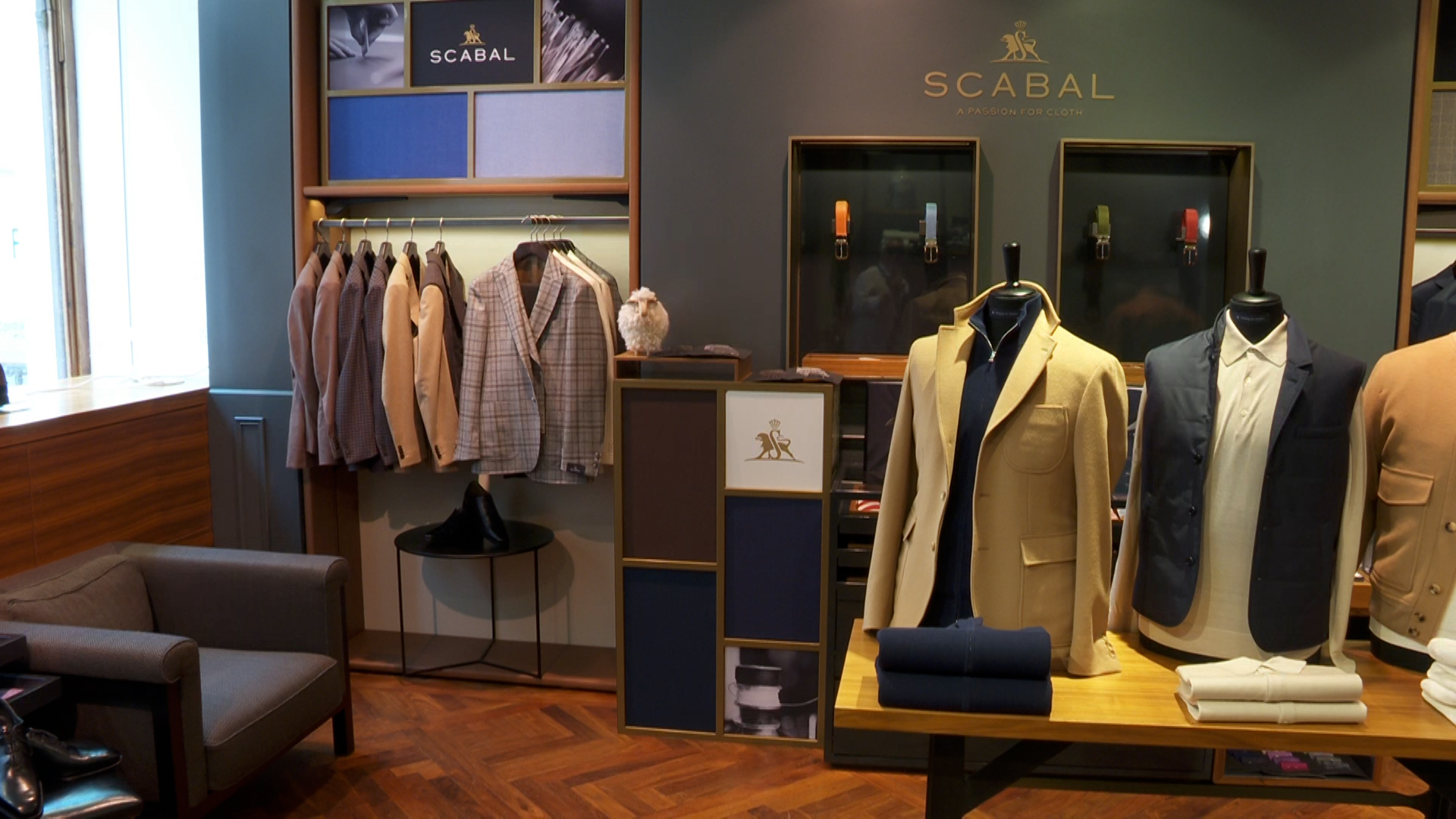
Made-to-measure suits are only fitted to the nearest centimetre - bespoke suits are cut to exact measurements. /CGTN
Made-to-measure suits are only fitted to the nearest centimetre - bespoke suits are cut to exact measurements. /CGTN
For Featherstone, the ultimate classic everyman style is the dark blue suit – but the fit is still crucial.
"To make the best out of what you can get, is getting the lengths right on the sleeves, getting the length right on the jacket, getting the shoulders right.
"A suit that fits would make you look a million dollars. If you're just going by designer names and the suit doesn't fit, then you've just wasted your money.
"Every gentleman should have that one good suit in their wardrobe ready for any occasion that pops up, whether it's a job interview, whether it's a wedding, whether it's just going out socially or wanting just to make that special effort to impress someone."
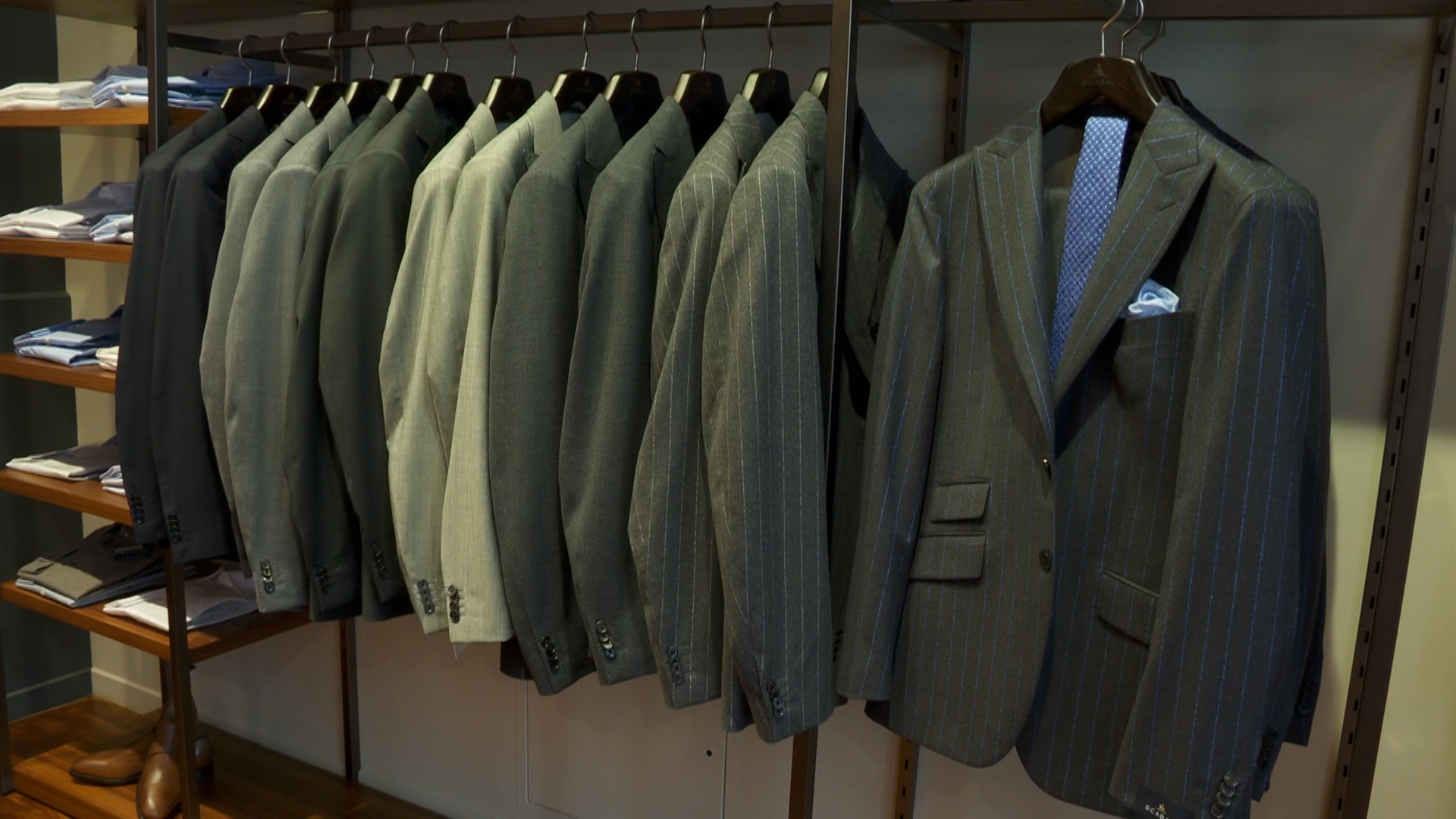
Tailors started to open businesses in Savile Row in the late 18th century as there were many affluent and influential people in the area at the time. /CGTN
Tailors started to open businesses in Savile Row in the late 18th century as there were many affluent and influential people in the area at the time. /CGTN
Despite the pandemic affecting employment, leisure and social activities, Featherstone isn't worried, insisting "there is still a demand for suits" – but he acknowledges a difficult economic outlook.
"Unfortunately with Savile Row, they're suffering a little bit. A lot of their market is international, so not being able to fly is a problem. Rents and rates are going up on Savile Row, that's not helping them at all.
"But bespoke customers and suit customers in general, they're quite loyal, so they're going to be back. There is a demand coming."
Featherstone says that, whether you're a man or a woman, there will always be a demand for formal fashion because there will always be a need to get dressed up for an occasion.
"This pandemic isn't going to last forever," he says. "We're going to get through this, we're going to start wanting to go out more, we're going to be allowed to go out more – and then we're going to go back to these occasions.
"There may be fewer occasions, but that will make it even more special."
Video editor: Pedro Duarte | Animator: James Sandifer